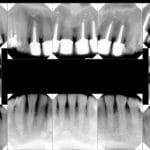Cleavage: More Than Meets the Eye – A historical, social, and political symbol interwoven with fashion, body image, and societal norms. From ancient sculptures to modern red carpets, the décolletage has captivated and confounded, sparking debates across cultures and throughout history. This article delves into the multifaceted world of cleavage, exploring its complex relationship with visual culture, sociopolitical dynamics, and the ongoing evolution of perspectives.
The Visual Landscape: Cleavage in the Digital Age
We live in a world awash in images, and cleavage is no exception. A quick search on platforms like Pexels (over 700,000 results), Pixabay (over 237), and Getty Images (over 770) reveals a vast library of freely available photos showcasing cleavage. This readily accessible imagery speaks to a widespread fascination, raising complex questions about representation, objectification, and the commodification of the female form. While these platforms offer images for commercial use, social media sites, and even those with NSFW content like Scrolller, add further layers to this digital landscape, blurring the lines between appreciation and exploitation.
Celebrity influence plays a significant role in shaping perceptions. From Rihanna’s daring red-carpet choices to the iconic images of Jayne Mansfield, highlighted in articles like those in Vogue, celebrities have long used cleavage as a fashion statement, influencing trends and impacting body image ideals. This “cleavage statement,” as some describe it, can empower, provoke, and perpetuate unrealistic beauty standards all at once. The prevalence of search terms like “Cleavage Dresses” and “Cleavage Prom Dresses” further underscores the impact of these portrayals on individual choices and aspirations.
Social and Political Fault Lines: Cleavage as a Dividing Force
Beyond the realm of fashion and visual culture, the term “cleavage” takes on a different meaning in political theory. Political scientists Seymour Lipset and Stein Rokkan, pioneers in cleavage theory, identified “cleavages” as deep-seated social and cultural divisions that shape political conflicts and voting patterns. These societal fault lines, often rooted in historical conflicts, can manifest in various forms:
- Owner vs. Worker: This classic class conflict fuels the formation of left and right-wing parties, with ongoing debates about economic inequality and labor rights.
- Church vs. State: The struggle between religious institutions and secular authorities continues to influence political discourse, impacting issues like education, moral values, and the role of government. Learn more about the impact of cultural backgrounds on these divisions.
- Center vs. Periphery: Tensions between a central power and outlying regions often lead to regionalist movements and demands for autonomy, reflecting historical grievances and power imbalances.
- Urban vs. Rural: Differing values and economic interests between urban and rural populations drive policy debates around issues like agriculture, land use, public transportation, and access to resources.
This table summarizes these key cleavages:
| Cleavage Type | Description | Example |
|---|---|---|
| Center-Periphery | Tension between a central power and outlying regions | Regionalist parties advocating for autonomy |
| Church-State | Conflict between religious and secular authorities | Debates over religious education in public schools |
| Worker-Owner | Tension between those who own capital and those who labor | Labor unions versus business associations |
| Urban-Rural | Differences in values and interests between urban and rural populations | Policies favoring agricultural subsidies |
While Lipset and Rokkan’s framework provides a powerful lens for understanding historical political divides, its relevance in the 21st century is subject to ongoing debate. Some researchers suggest that these traditional cleavages are being overshadowed by emerging divisions based on identity politics, environmental concerns (like climate change), globalization, and the fragmenting influence of social media.
Shifting Perspectives: Reclaiming the Narrative
The conversation surrounding cleavage has long been dominated by the male gaze. However, evolving social norms and the rise of body positivity movements are challenging traditional perspectives. Women are increasingly reclaiming the narrative, choosing to embrace and celebrate their bodies on their own terms. This shift involves redefining cleavage as a form of self-expression rather than solely an object of male attention.
However, the experience of cleavage is not monolithic. Intersectionality adds further complexity, highlighting how factors like race, ethnicity, age, and cultural background influence perceptions and experiences. A woman of color, for instance, may navigate different societal pressures and expectations than a white woman. Understanding these nuances is crucial for fostering a more inclusive and respectful dialogue.
Historically, attempts to control and censor cleavage reflect anxieties surrounding female sexuality and societal norms. Dress codes in schools, media censorship, and cultural taboos all speak to the ongoing tension between individual expression and societal expectations. Who gets to decide what’s appropriate? These power dynamics are embedded within the very fabric of our discussions about cleavage.
Beyond the Bust: Other Meanings of Cleavage
Beyond its social and political connotations, “cleavage” holds different meanings in other contexts:
- Geology: In the world of rocks and minerals, cleavage refers to the tendency of minerals to break along smooth, flat surfaces. This is determined by the internal arrangement of atoms and reflects the inherent weaknesses within the crystal structure.
- Biology: In the realm of biology, cleavage describes the rapid cell division that occurs during early embryonic development. This process transforms a single fertilized cell into a multicellular organism.
| Type of Cleavage | Description |
|---|---|
| Geological | How minerals break along specific planes. |
| Biological | Rapid cell division in early embryonic development. |
| Figurative | Divisions within groups based on different factors. |
The Future of Cleavage: An Ongoing Evolution
As fashion evolves and social movements gain momentum, our relationship with cleavage will likely remain dynamic and complex. The future is not predetermined but rather shaped by ongoing dialogues, shifting perspectives, and individual acts of defiance and self-acceptance. One thing is certain: cleavage, in all its complexity, will continue to be a reflection of our ever-changing social, cultural, and political landscape.
- Unlock Elemental 2 Secrets: Actionable Insights Now - April 2, 2025
- Lot’s Wife’s Name: Unveiling the Mystery of Sodom’s Fall - April 2, 2025
- Photocell Sensors: A Complete Guide for Selection and Implementation - April 2, 2025
















